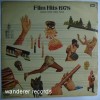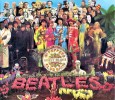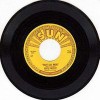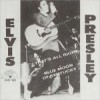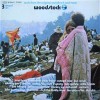LP and EP
Picture yourself on a boat on a river …1
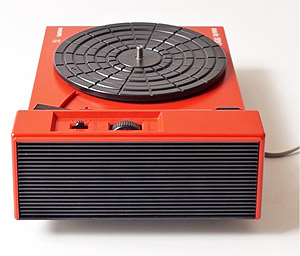 Columbia’s 331/2 rpm disc with 20 mins playing time on each side and RCA’s single song 45 rpm record went onto the market in 1951. Eventually the LP completely replaced the EP by 1975.
Columbia’s 331/2 rpm disc with 20 mins playing time on each side and RCA’s single song 45 rpm record went onto the market in 1951. Eventually the LP completely replaced the EP by 1975.
LPs and EPs were recorded no longer on wax but on magnetic tape yielding superior quality sound. Wax required artists to break every four minutes. Magnetic tape no longer needed this and the momentum of the performance could thus be sustained. The final recording was now the result of splice editing which enabled the selection of the best parts of each take.2
The better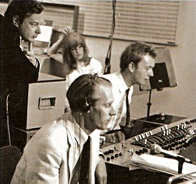 quality of records led to the demand for more sophisticated equipment and several developments took place to enhance the sound. Two-track or stereo recording was introduced and in 1957 the first stereo records were issued. People began to buy “high fidelity” or “hi-fi” equipment consisting of separate turntables, amplifiers, sensitive pick-ups and separately enclosed speakers and woofers in order to take full advantage of the quality of sound offered by stereo records.
quality of records led to the demand for more sophisticated equipment and several developments took place to enhance the sound. Two-track or stereo recording was introduced and in 1957 the first stereo records were issued. People began to buy “high fidelity” or “hi-fi” equipment consisting of separate turntables, amplifiers, sensitive pick-ups and separately enclosed speakers and woofers in order to take full advantage of the quality of sound offered by stereo records.
The post-war years saw the rise of R&B and Rock n’ Roll – forms of music that required greater innovation and volatility in music creation. Magnetic recording also allowed greater flexibility in sound production. Recording studios began producing music catering to young people who became avid consumers of RCA’s EPs which were playable on a small turntable costing only $ 12.95, also marketed by RCA.
The ease in the transport and sharing of the magnetically recorded discs also enabled the sharing of music influences across race and class barriers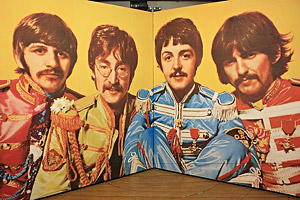 and played a huge part in creating the world’s first “youth culture”. In 1953, 15 million R&B records were bought. These accounted for just 5% of all records sold but signaled the birth of a young audience whose feeling as a community was largely mediated through music.3 In 1954, Elvis Presley recorded his first number “That’s all right Mama” 4 in Sun Studios, Memphis. The following year he signed a contract with RCA for the unheard of sum of $35,000. He was the world’s first rock n’ roll star. Technology had combined with other social movements such as the feminist and civil rights movements to create the mood and feel of this special time in history.
and played a huge part in creating the world’s first “youth culture”. In 1953, 15 million R&B records were bought. These accounted for just 5% of all records sold but signaled the birth of a young audience whose feeling as a community was largely mediated through music.3 In 1954, Elvis Presley recorded his first number “That’s all right Mama” 4 in Sun Studios, Memphis. The following year he signed a contract with RCA for the unheard of sum of $35,000. He was the world’s first rock n’ roll star. Technology had combined with other social movements such as the feminist and civil rights movements to create the mood and feel of this special time in history.
The next important development in magnetic recording was 4-track recording. It became common studio recording practice to record on multiple tracks and mix them afterwards. This was the studio standard during the later 60s. Many of the most famous recordings of The Beatles and The Rolling Stones were recorded on 4-tracks. The sound engineer became an extremely important participant in music production. The engineers at London’s Abbey Road Studios became particularly adept in recording multiple tracks and combining them into finished recordings of great complexity.5
into finished recordings of great complexity.5
With this new wave of sophistication in recording, music studios became a new arena of artistic vision. In 1967 the Beatles and George Martin collaborated on the most legendary breakthrough in studio production – Sgt. Pepper’s Lonely Hearts Club Band6 – which is widely thought of as the first studio ‘concept album’. The 700 studio hours that went into it crystallize as a masterwork that countless recording artists have since been trying to emulate.7
The sophisticated technology of the late sixties infused deliberation and complex conceptualization into popular culture transforming it from a ‘low-brow’ art into a high-brow one. Popular art can even be called, with reservation, the ‘classicism’ of our age in which democracy and technology are the great equalizers.
More Photos
Geoff Eemerick photo sourced from http://www.analogtapesupply.com/blog/629047-geoff-emerick-engineer-and-producer
1 http://www.youtube.com/watch?v=A7F2X3rSSCU from Sgt. Pepper’s Lonely Heart Club Band
2 http://home.intekom.com/restore/History_Recording.html
3 http://rockmusiclists.wetpaint.com/page/Rock+n’+Roll+Timeline
4 http://www.youtube.com/watch?v=hIWlWA1YTBw
5 http://en.wikipedia.org/wiki/History_of_sound_recording#Multitrack_recording
6 http://www.youtube.com/watch?v=XAeyO1Egrj8
7 http://www.icons.org.uk/theicons/collection/sgt-pepper/biography/its-influence



